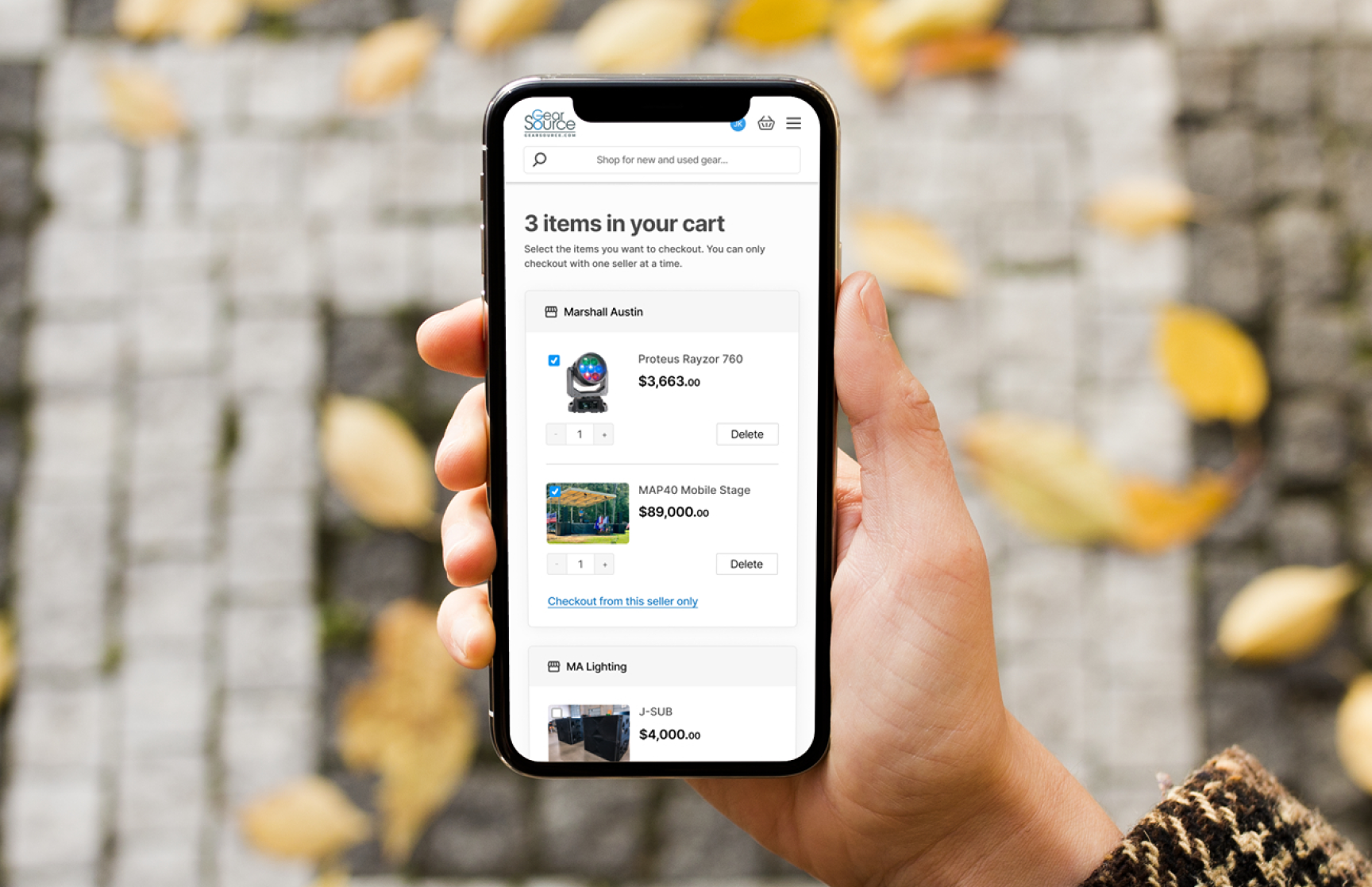



GearSource already had a strong brand and loyal customer base, but its systems were designed for internal sales rather than third party transactions. The challenge was to create a flexible and trustworthy platform where thousands of global vendors could list inventory, manage orders, and communicate with buyers without compromising quality or control.
I collaborated closely with the founder and engineering to deliver an experience that felt familiar to existing customers yet scalable for new users. My role involved defining the product vision, designing complex vendor workflows, and shaping a design system that could grow with the business.
This project required a balance of structure and creativity. I needed to think strategically about legacy constraints while pushing for innovation and simplicity across the platform.
Most B2B resale platforms suffer from cluttered interfaces and inconsistent data. Vendors struggle to manage listings efficiently, and buyers find it hard to evaluate products they cannot physically inspect.
GearSource wanted to avoid those pitfalls. The new marketplace had to provide a clear, transparent experience for both sides, giving vendors full control of their inventory while enabling buyers to compare listings, understand availability, and trust in product quality.
Behind the scenes, the internal systems had to support complex logic around product catalogues, stock management, shipping calculations, and multi currency transactions. These layers added significant design and technical complexity.
The goals for this project combined strategic vision with practical execution. We wanted to build a product that would serve the company’s long term ambitions while also delivering tangible improvements to the day to day experience of vendors and buyers.
Establishing a shared design vision
I began by facilitating alignment workshops to define the marketplace vision and user priorities. These sessions brought together stakeholders from engineering, product, and marketing to establish a common understanding of what success looked like. By grounding decisions in shared context, we built momentum and avoided the fragmentation that often occurs in large scale redesigns.
Throughout the process, I used storytelling and high-fidelity wireframes to bring ideas to life quickly. This helped non design stakeholders understand the user experience early and contribute meaningfully to direction and scope.
Designing for complexity and flexibility
The marketplace required intricate systems for vendors, including bulk upload tools, inventory management, and shipping configurations. My goal was to simplify these without losing capability.
I developed modular layouts and progressive forms that reduced cognitive load and surfaced only the information relevant to each step. The design balanced the need for flexibility with the importance of speed, helping vendors complete actions efficiently while maintaining a sense of control.

Building system wide consistency
With multiple teams contributing to the platform, design consistency became essential. I introduced a structured design system and component library to support collaboration between myself and the engineers. Each new component was documented with usage rules, accessibility guidelines, and responsive variants.
This not only improved delivery speed but also ensured that every new feature adhered to a unified aesthetic and interaction logic.
Working in a fast paced environment
GearSource operated with tight deadlines and overlapping initiatives. I adopted an agile, iterative process that allowed for rapid exploration and refinement. I collaborated daily with engineers to test feasibility, refine edge cases, and align on implementation details.
In parallel, I partnered with the brand team to evolve GearSource’s visual identity, modernising typography, colour, and hierarchy while preserving the bold, confident tone that users already trusted.

GearSource was a masterclass in balancing innovation with legacy, modernising a trusted brand while respecting the systems and people that made it successful.
It reinforced my belief that great design is as much about communication as it is about creativity. By fostering alignment across teams, explaining the reasoning behind each decision, and keeping users at the centre, we created a marketplace that feels powerful, professional, and unmistakably GearSource.
This project strengthened my ability to navigate ambiguity, make sound product decisions in complex spaces, and lead with both clarity and curiosity.

agile iteration / Systems thinking
Partnered with the founder, product, and engineering teams to design a fast moving B2B marketplace. Focused on system thinking, iterative delivery, and data informed decisions to create a cohesive, sustainable experience that evolves with the business.
View case study

empathy / trust / collaboration
Designed an end to end platform connecting parents and providers through clear, reliable design. Collaborated asynchronously with a cross functional team to define user flows, design systems, and polished interfaces that inspire confidence and support growth.
View case study